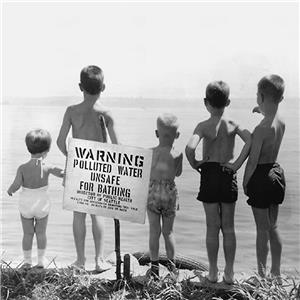On October 1, 1958, Metro Council, formed to clean up Lake Washington and reduce water pollution in King County, holds its first meeting. At the time, 14 towns and cities in King County discharge 20 million gallons of inadequately treated sewage into Lake Washington every day.
The Municipality of Metropolitan Seattle -- Metro -- was approved by voters on September 9, 1958, pursuant to a new state law allowing the formation of metropolitan municipal corporations to address water quality, transit, and planning issues that were beyond the capacity of counties and incorporated cities. The metropolitan-type government was modeled on one in Toronto, Ontario, and was made up of the elected officials of the participating governments. Proponents convinced voters that this new approach to government was needed to protect the quality of life in the Puget Sound region.
Metro was governed by a 15-member Metro Council that included County Commissioners, council members, and mayors from King County cities, and other appointees. The initial 15 members were County Commissioners William Moshier and Dean McLean, Seattle Mayor Gordon Clinton (1920-2011), Seattle City Councilmembers Clarence F. Massart, Myrtle Edwards, Charles M. Carroll, David Levine, Bob Jones, M. B. Mitchell, and J. D. ("Dorm") Braman, Bellevue Mayor C. Norman Dickison, Jr., Beaux Arts Mayor M. E. Sharp, Renton Mayor Joe Baxter, Dean Worthington, and C. Carey Donworth.
The Metro Council held its first meeting on Wednesday, October 1, 1958. The only business transacted was the naming of a three-person nominating committee (consisting of Clinton, Dickison, and Moshier) to select a Council chairman. The following Monday, October 6, the Metro Council elected Donworth, a 34-year-old labor relations consultant, as its chair and voted to pay him $15 an hour plus out of pocket expenses. James R. Ellis, an early proponent of Metro, was appointed legal counsel. Harold Miller, director of the state Pollution Control Commission, became Metro's first executive director.
Metro engineers eventually designed four wastewater-treatment plants, more than 100 miles of large tunnels and interceptor sewers, and dozens of pumping stations. This took nine years and $140 million. Metro also took over the publicly owned treatment works that were discharging into Lake Washington and connected them with treatment plants on Puget Sound.
In 1950, an eight-inch disk was visible from the surface of Lake Washington at a depth of 12 feet. By 1966, the lake had become so polluted that the disk could not be seen more than two feet below the surface. Two years later, after Metro closed the last plant discharging into the lake, the disk was visible at a depth of nine feet, and by 1993 it could often be seen at nearly 25 feet.
In 1994, Metro was folded into King County as the result of a court decision that held that the metropolitan municipal corporation was unconstitutional.

